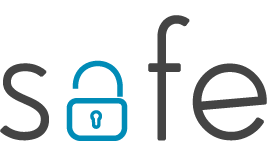The following document describes a SAFE-Stack sample project that brings together CQRS/Event-Sourcing on the backend and the Elm architecture on the frontend.
SAFE is a technology stack that brings together several technologies into a single, coherent stack for typesafe, flexible end-to-end web-enabled applications that are written entirely in F#.
This is the sample project that is used in the talk "Domain Driven UI" (Slides). The title is a bit misleading as it is a bad name for "Reusing your datatypes and behaviour from your CQRS/Event-Sourced models in your Elm-architecture application."
Given you use F# and Fable, you can actually build simple eventually connected systems and have the exact same model working in back and frontend.
The application showcases a couple of things:
- The reuse of the complete domain model on the client and server.
- It shows the nice fit of and similarity between CQRS/Event-Sourcing on the backend and the Elm-Architecture on the frontend.
- It reuses projections from the backend in the update function of the elmish app. The backend is sending domain events to the frontend and the (Elm-)model is updated with the help of projections defined in the backend (on all clients that are connected via websockets).
- It shows an easy way of implementing "Whatif"-Scenarios, i.e. scenarios that enable the user try out different actions. When the user is happy with the result the system sends a batch of commands to the server. When "Whatif-Mode" is enabled the client reuses not only the projections but also the domain behaviour defined on the server to create the events needed by the update function. The potential commands are also stored.
- It uses the awesome Fulma library for styling
- It has BDD Style tests that show how nice the behaviour of Event-Sourced systems can be tested.
- Websockets with Elmish/Suave
Up to now there is no working version available online. Any help would be appreciated. If you want to try it locally, please run the fixtures (see Demo Data section below). Otherwise you will not be able to login or see any kind of data.
This project consists of 6 dotnetcore subprojects
Domain- Message-based CQRS implementation of the Domain of a ConferencePlanner.Domain.Tests- BDD-Style Tests for theDomainClient- Fable Project that uses the Elm-Architecture (with Fable-Elmish). It reuses the projections of theDomainproject. Furthermore it and can also reuse the behaviour of the Domain (when switched toWhatIf-Mode)Server- A Suave Webserver that allows the Client to connect via Websockets.Infrastructure- This is where all the backend infrastructure is implemented. It contains a simple (file based) event store, command and query handlers and the types that hold everything together. Most of the infrastructure is implemented asynchronously with the help of F# awesome Mailbox ProcessorsSupport- A simple project to fill the EventStore with some initial values.
- Mono on MacOS/Linux
- .NET Framework 4.6.2 on Windows
- node.js - JavaScript runtime
- yarn - Package manager for npm modules
- dotnet SDK 2.1.3 The .NET Core SDK (will be installed by build script)
- Other tools like Paket or FAKE will also be installed by the build script.
This development stack is designed to be used with minimal tooling. An instance of Visual Studio Code together with the excellent Ionide plugin should be enough.
Start the development mode with:
> build.cmd run // on windows
$ ./build.sh run // on unix
This will start Suave on port 8085 and the webpack-dev-server on port 8080. Then it will open localhost:8080 in your browser.
Enjoy.
NOTE Currently there is a bug that might prevent Fable and the server to be started in parallel.
If this is happening:
- open a terminal
- go to
src/Server - run
dotnet run - open another terminal
- go to
src/Client - run
dotnet fable yarn-run
With FAKE (does a full dotnet restore etc.)
> build.cmd RunTests // on windows
$ ./build.sh RunTests // on unix
On the CLI (without building everything) in src/Domain.Tests:
> dotnet test
or in watch mode
> dotnet watch test
You can now edit files in src/Domain or src/Domain.Tests and recompile + testing will be triggered automatically.
If you want prefill the conference Event-Store with some demo data you can run:
> build.cmd RunFixtures // on windows
$ ./build.sh RunFixtures // on unix
The events will be written to src/Server/conference_eventstore.json
Currently you do want this, because there is no way to add abstracts or organizers.
From the top of my head. If anyone wants to chip in, feel welcome.
- make use of Azure to deploy the application
- extract the project into its own repository and make it a bit more production ready :D
- implement at least one different event store implementation (e.g. SQLite or Azure something something)
- implement projections that can send notifications
- implement a proper autohrization system
- build an actual Conference Planner
- Either comment out the lines in
App.fs:
#if DEBUG
|> Program.withDebugger
#endif- Or install the Redux DevTools as a Chrome/Firefox Extensions (recommended) Only one error remains, when visiting the WebApp the first time.
- @rommsen
- @heimeshoff
- you?
